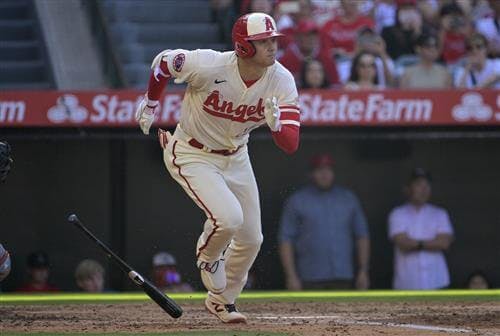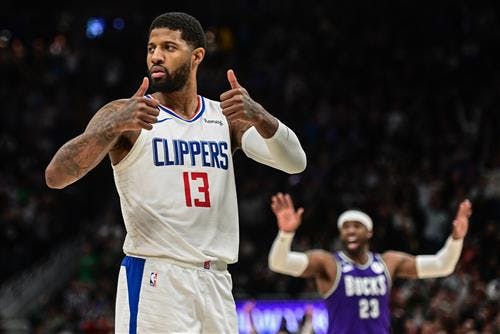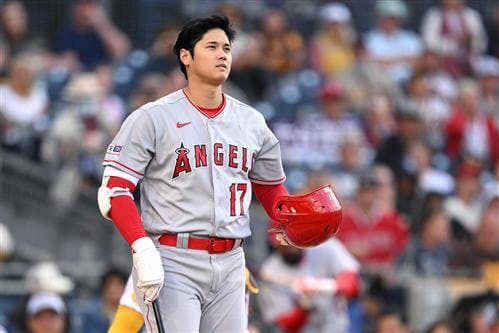Shohei Ohtani is both text and subtext, the brightest light in the firmament and the candle flicker on the wall. He is right there in front of us, obvious in all his brilliance, yet slightly out of reach, his present as clear as his future is uncertain.
This current edition of "Season of Ohtani" feels like the height of something, like a great artist's signature piece or a writer's seminal work. Every oversaturated box score speaks to something previously unattainable, an unrepeatable (for now) shift of the game's tectonics. It feels as if it could be the end of something, or at least a gateway to something completely different.
Ohtani's pending free agency hovers above the Angels' season, following them everywhere. When manager Phil Nevin is asked whether he believes his team can compete with the Astros and Rangers in the American League West, he is being asked whether the Angels can keep Ohtani. When general manager Perry Minasian is asked how many games per month his team needs to win to remain in contention, or whether there is a magical number of losses that will denote non-contention, he is being asked whether the Angels can keep Ohtani. When Angels players are asked whether they feel momentum flowing or ebbing or remaining the same, they are being asked whether the Angels can keep Ohtani.
The only one who is not asked whether the Angels can keep Ohtani is Ohtani.
I set out to contextualize this moment, whatever it is now and whatever it might become: Ohtani on the brink of free agency, and the Angels desperately trying to play well enough to win him over. The idea was to capture the experience beginning with one Ohtani start on the mound and finishing with the next; in this case, seven otherwise random games in June, three against the Astros, three against the Cubs and one against the Mariners. The Angels won five of seven, the last five in a row. Ohtani was 11-of-28 with two homers and six RBIs, and he pitched 11 innings over two starts, striking out 12 and allowing seven earned runs. It was a decent but understated start to what would become one of the best months by an individual player in baseball history.
To watch Ohtani over an extended period of time is to be subsumed into his world. There is always a small, revelatory moment, far removed from the home runs and the 102 mph fastballs, that feels unique to Ohtani. In the sixth inning of Ohtani's June 2 start against the Astros, Kyle Tucker rolled over on a pitch and tapped it to first, about 40 feet from home plate and 6 feet off the foul line. Ohtani ran over and picked it up and stood in the baseline, facing Tucker, who had stopped as Ohtani tried to decide the most respectful way to record the out. They stared at each other for a second or two before Tucker extended his right arm and presented it to Ohtani, as if to say, "Here, this is how this ends." I found myself constantly looking at my scorecard to see when he would come to bat again, and watching him and translator/friend/coach/consigliere Ippei Mizuhara gesticulate over a tablet in the dugout, and tracking the time it takes him to regroup after an at-bat and before he heads to the mound. (The umpires, understanding the moment, have granted him some between-inning leniency.) Every at-bat was accompanied by the collective lean of 30,000 people, suddenly engaged. There were times I wished -- as I'm sure Nevin does -- that Ohtani could expand his oeuvre and occupy two spots in the batting order at once.
Ohtani's excellence is such a feature of the landscape that it can be difficult to believe it wasn't always like this. During his first spring training with the Angels, in March 2018, I sat in the stands in Tempe, Arizona, watching him bounce fastballs and hang breaking balls against the Tijuana Toros, a Mexican League team in town for a game so far off the radar they played it in the morning and didn't sell tickets. Ohtani was terrible -- wild, rhythmless, confused. He threw very few strikes, and the ones he threw got hit hard. I listened as people told me the American baseballs were too slick and the mounds too hard, and I listened as his high school coach, Hiroshi Sasaki, told me that Ohtani needed two years of struggle to reach his potential. "Right now," Sasaki said, "Shohei is crouched. He must go down before he rises up." I nodded and wrote it down, not sure I believed it.












